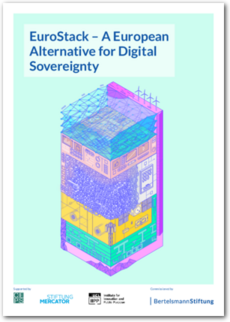More than 80% of Europe’s digital technologies and infrastructures are imported, and 70% of the foundational AI models used globally originate in the United States. Meanwhile, European companies account for just 7% of global research spending on software and the internet. These figures alone highlight Europe's heavy reliance on other economic powers in the digital sector. The EuroStack initiative aims to change that, serving as a cornerstone of the European Union’s push for digital sovereignty and self-determination.
Backed by a cross-party coalition in the European Parliament, the EuroStack initiative emerged from a parliamentary event in September 2024 and brings together leading companies, academics, policymakers and civil society. Beyond reducing technological dependence, the initiative seeks to boost industry competitiveness, drive innovation, build resilient sovereign infrastructures, expand mutual networks and harness digital technologies for the common good. A key element of the framework is its commitment to democratic values, social norms and the EU's sustainability goals.





